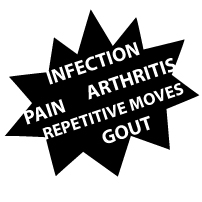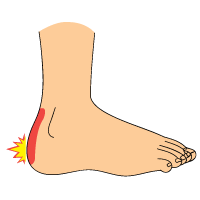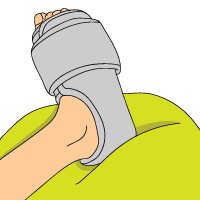What Is Heel Bursitis?
Bursitis of the heel (also known as retrocalcaneal bursitis) occurs when the bursa at the back of your heel becomes irritated and inflamed. A bursa is a small sac filled with fluid that helps the joints in your body stay lubricated. Heel Bursitis often occurs along with Achilles Tendonitis.
 Causes
Causes
Heel Bursitis can be caused by or associated with the following:
-Direct hit to the outside of your heel
-Improper footwear (too tight)
-Repetitive ankle movements
-Arthritis
-Gout
-Infection
Signs & Symptoms
Signs and symptoms of Heel Bursitis include:
- Pain (particularly with activities like walking and running)
- Stiffness
- Reduced ankle mobility
- Ankle is red and warm
Treatments for Heel Bursitis
 RICE – Rest, Ice, Compression & Elevation are effective for treating Heel Bursitis. Rest will help you avoid the worsening of your symptoms. Ice and Compression work to alleviate pain and reduce swelling. Elevating your foot will help bring down any inflammation.
RICE – Rest, Ice, Compression & Elevation are effective for treating Heel Bursitis. Rest will help you avoid the worsening of your symptoms. Ice and Compression work to alleviate pain and reduce swelling. Elevating your foot will help bring down any inflammation.
Proper Footwear – If you think your Heel Bursitis may have developed because of improper footwear, invest in a new pair of shoes. Look for something that fits properly (not too tight or too loose) and provides support for your metatarsals and heels. Avoid wearing high heels.
Physical Therapy – A physical therapy program can help you regain the proper movement of your ankle with stretching and strengthening exercises.
Painkillers – NSAIDs like ibuprofen and naproxen can help to relieve the pain and inflammation of your Heel Bursitis.
Cortisone Injections – Cortisone shots can be administered to temporarily relieve pain and inflammation. However, there are risks and complications associated with cortisone shots, including skin discoloration, nerve damage and infection.